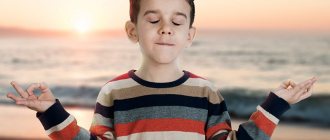The way in which the labor education of preschool children is organized is of great importance. Success in the coming adult life, future practical skills, a responsible attitude to work, a conscious approach to choosing a profession are formed through the joint activities of preschool children and mentors.
Labor education in preschool educational institutions is a means by which:
- basic positive personal qualities and the child’s psychological readiness for adult work are formed;
- pupils develop mental and physical abilities;
- During the lessons, positive, friendly relationships are formed, children get used to working collectively, and learn to appreciate the work of their elders and peers.
The main areas of work activity of preschoolers
For a kindergarten teacher, task number one is to help children get acquainted with the world of adults. Children must learn to perform simple actions themselves: wash their hands and face, sweep the floor, do laundry. Parents do not always realize that the basis of all their child’s skills are labor skills that form independence, determination, and diligence. These qualities will then help the child quickly and easily find his place in society.
The main goal of labor education of children in kindergarten, according to the Federal State Educational Standard, is to develop in them a positive attitude towards work. This can be achieved only by taking into account the age characteristics of the pupils. The type and complexity of the activity in which they are planned to be involved depends on the age of the children.
What goals does the teacher pursue in teaching preschoolers:
- awaken in children a desire to help adults, instill in them a positive attitude towards work;
- desire to deepen and improve work skills;
- achieve a strong habit of employment, responsibility, careful attitude towards one’s own and other people’s products of labor;
- lay the foundations of the ability to organize your work;
- teach children a friendly attitude towards the activities of others, the ability, if necessary, to make tactful comments, and evaluate the results of their activities and the work of a friend.
In accordance with the Federal State Educational Standard, labor activities of preschoolers occur in the following areas:
- mastering self-care skills, which is important for any age group;
- skills in everyday life and housekeeping, work in nature are also characteristic of both the younger group and the preparatory group;
- manual labor is present in the senior and preparatory groups.
?
Work on developing labor skills should be closely related to creativity. To discover the talents of a creative person, seeing joy in work is a necessary condition.
Labor education in relation to different age groups
Preschool age is the best time to develop basic self-care skills, certain skills, and observation. With each stage, the load becomes more complex and requires appropriate actions from the guys. Adults need to remember about age-related characteristics, show patience and kindness, so as not to cause denial in the child.
- The child's fingers are not yet sufficiently developed and do not obey him well.
- The sequence of actions is also not given to the baby; it is difficult to remember everything the first time.
- A younger preschooler will not be able to attract volitional efforts to help; these abilities are still just being formed.
Teachers usually know which teaching methods are appropriate for each age group. They have the responsibility to give recommendations to parents so that children develop harmoniously.
Taking into account the physiological and psychological characteristics of pupils, you need to remember that for children 3-4 years old, the optimal duration of work is 10-15 minutes . Children aged 6-7 years do physical exercise for a maximum of half an hour. The condition of each baby must be monitored. Pay attention to sweating and redness of the skin, when they appear it is better to change your occupation. To prevent children from getting tired, it is better to move on to other activities after 10-15 minutes. When dosing them, be sure to take into account the volume of physical activity and its complexity.
Drawing lessons in the second junior group
Labor education in the younger group
Children 3-4 years old are active, often talking about their desire to participate in one activity or another. But they get tired quickly, it is difficult for them to concentrate, so you should not overload them. The assignments of adults in the younger group are more individual in nature; the student will only need to hang up towels or arrange the cutlery for dinner.
Points to consider:
- labor education is situational in nature, for a three-year-old the main thing is that the tasks are simple and understandable;
- children should be praised for any success;
- In order for the child to understand the meaning of his actions, the teacher needs to explain the tasks and evaluate the results;
- Before doing anything, the child needs to observe how an adult copes with it; then the child’s actions follow with step-by-step comments from the teacher.
The main method of working on labor education with children 3-4 years old is personal example. The guys watch the actions of their elders, manual labor, various exercises are carried out in a playful way. Knowledge is consolidated through the example of such famous works as “Fedorino’s grief” or “Moidodyr”.
Labor education in the middle group
By the age of four, the baby will be able to handle sweeping paths or washing doll clothes. The tasks gradually become more complex, and the children already have some self-organization skills. They can be entrusted with duty in the dining room or preparing for classes; the children are quite capable of performing simple care for animals in a corner of nature.
In the working method it is important:
- note the child’s desire to help;
- the work is carried out in a playful way (application and design, rules of behavior in various situations are reinforced through role-playing games);
- visual aids are used;
- Conversations are held about the content of future actions and relationships.
Labor education in the senior group
Collective assignments are already being used with children aged 5-7 years. When interacting with each other, children learn to coordinate efforts, agree on something, and share responsibilities among themselves. Playing for children is still the main activity, but they meet the teacher halfway, help replace bed linen in the bedroom or collect leaves on the site.
It is important for the teacher to organize the workspace and equipment. Shovels and watering cans should be bright and comfortable to make children want to play with them. Elegant aprons will create a feeling of celebration. The duration of classes should not be overtiring.
?
The main goal of the labor development process in preschool educational institutions is to develop a respectful attitude towards the activities of adults, familiarity with the main professions, understanding of their significance, and the desire to help.
Labor education in the preparatory group
For older preschoolers, work takes on a systematic nature and becomes more numerous. Children repair books or boxes and sew buttons on their own. Under the supervision of the teacher, they prepare the necessary manuals for classes, counting material, and cut out specified elements from plastic bottles. The guys themselves notice the disorder in the area, water the flowers, and remove fallen leaves.
Age groups in kindergarten by year according to Federal State Educational Standards
In the seventh year of life, pupils help set the table for dinner, the attendants monitor the availability of soap and towels, the quality of hand washing, and look after the living area.
Household work.
This type of work - an integral part of everyday life - consists of creating cleanliness and order in the room, providing all possible assistance to adults. Children of 2 years are just beginning to get acquainted with this type of work activity, watching adults and older brothers and sisters, but already at this age they need to be involved in carrying out simple tasks. This can be expressed in helping to set the table, cleaning up games and toys, laying out or arranging some things or objects in their places, cleaning up dry leaves in the yard, etc. It is important for adults to appreciate the efforts of the child, thereby expressing their love for the baby .
The content of household work for children aged 4-5 years is significantly expanding and becoming more complex. Thus, in families and kindergartens, preschoolers are able to independently wash toys, set the table, put away dishes, prepare a workplace for classes, and then clean it up; with the participation of an adult, they wash doll clothes, wipe dust on furniture and window sills, make the bed, on the street they can sweep the paths, clear the benches of snow, etc.
The household work of older preschoolers is even more varied, complicated and becomes systematic. Children can organize it themselves, select the necessary equipment, evaluate the results, and clean up after themselves after games or activities without a reminder. Of course, modern life is directly related to household appliances; almost every family uses a washing machine, vacuum cleaner, microwave oven, etc. At this age, you can teach preschoolers to use some household appliances, but only under the supervision of their parents.
Hygiene control, SanPiN requirements
with the education of a proper attitude towards fauna and flora in connection with the new requirements of SanPiN . Labor in nature is actually prohibited; children can only water flowers; parrots and fish have no place in the group’s premises. If previously the children made their own beds, now this responsibility falls on the assistant teacher. Not everyone has grandmothers in rural areas, so children have no idea how cucumbers and apples grow. Without practice, they become not colleagues, but observers of the work of parents and teachers.
Hygienic conditions are certainly important for the proper organization of children’s activities. Classes should take place in a room with good lighting and ventilation. The teacher must draw the children's attention to body position, teach them to monitor their posture, and take advantage of the slightest opportunity to exercise outside in good weather.
For manual labor, safe materials and tools are needed; they must be appropriate for the age of the students, be comfortable, and attractive in appearance.
Manual labor.
It helps children obtain primary information about the properties of various materials and how to work with them. Preschoolers should be introduced to this type of work no earlier than 4 years old, because it involves working with different types of paper and fabric, threads, leather, natural and waste materials, dough, plaster, beads, scissors, glue, and awl. Manual labor turns children and parents into creators, as it allows them to show imagination and ingenuity in the manufacture of a beautiful product that can be used as a toy, household item, or gift. There are a great variety of work options: collages, panels, soft toys, napkins, decorative ornaments, small sculptures, etc. In the family, you can organize themed days, for example, “Santa Claus’s Workshop”, “Mom’s Helper”, “Winter Artist”, etc. Manual labor involves joint creativity of parents and child.
Interaction with parents
Success in cultivating hard work can be achieved provided that the preschool educational institution and the family work together . In individual meetings and conversations, the teacher talks about the requirements and the work that is carried out within the kindergarten. Parents need specific recommendations on the maintenance and organization of children's work at home.
For this purpose, we have prepared a separate material “Recommendations on labor education for parents.”
Not all parents understand that they can expect high-quality completion of a task from their child only when they have shown and explained how and what needs to be done, that it is impossible to punish with work, it is important to notice the efforts and thank them. For children's assistance, it is necessary to create the necessary conditions, which include a convenient place and equipment; the activity itself must involve the child in the activities of the family.
In light of the new requirements of SanPiN, parents could help in landscaping the area with safe plants on their day off or in the evening. It will be useful to demonstrate children's crafts and drawings. You can organize visual photo exhibitions with interesting comments, where the kids’ work will be demonstrated. At thematic stands, teachers should place books on education recommended to parents. Here it is also possible to popularize the positive experience of parents from the group.
The importance of work in education is difficult to overestimate. The joint task of adults is to remember that the child may not be able to cope or may be afraid to make a mistake. Parents and educators should encourage any attempt to work , support the pride and confidence of the student that he is an adult and capable of good, great deeds.



